As of 2020, five of the most important cities and towns in Vietnam and Laos have introduced both temporary and permanent pedestrian and walking zones.
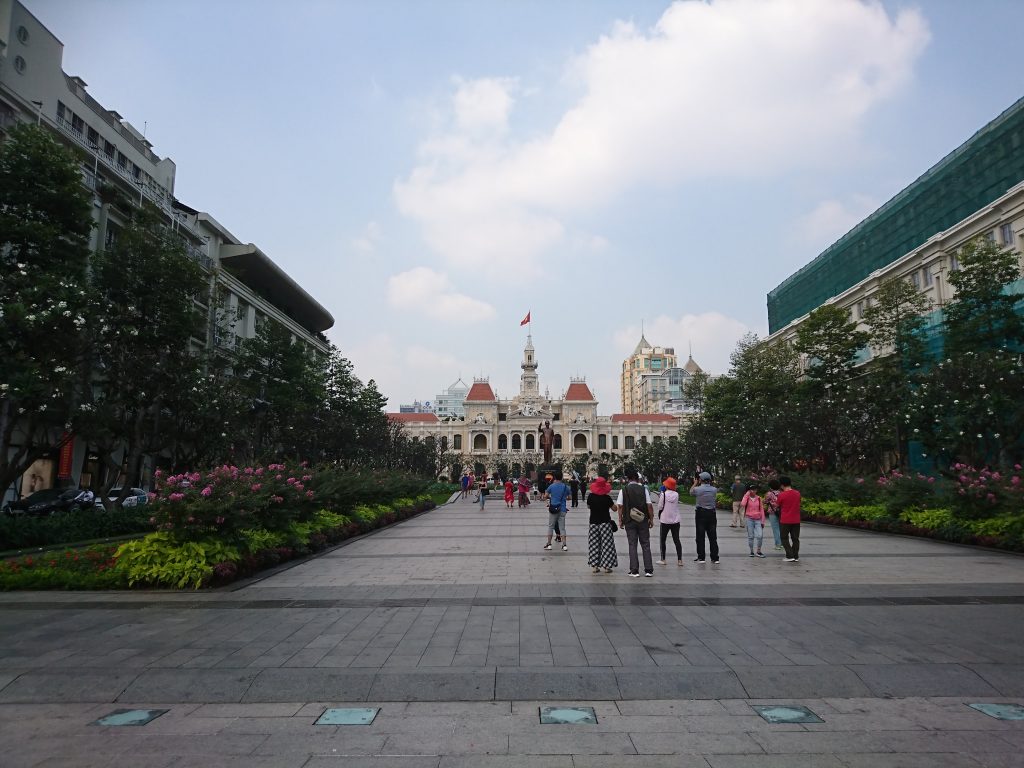
- Ho Chi Minh’s (HCMC) walking street shows how combining both permenant pedestrianised streets with temporary timed car free areas provides great flexibility to people orientated urban areas and allows for
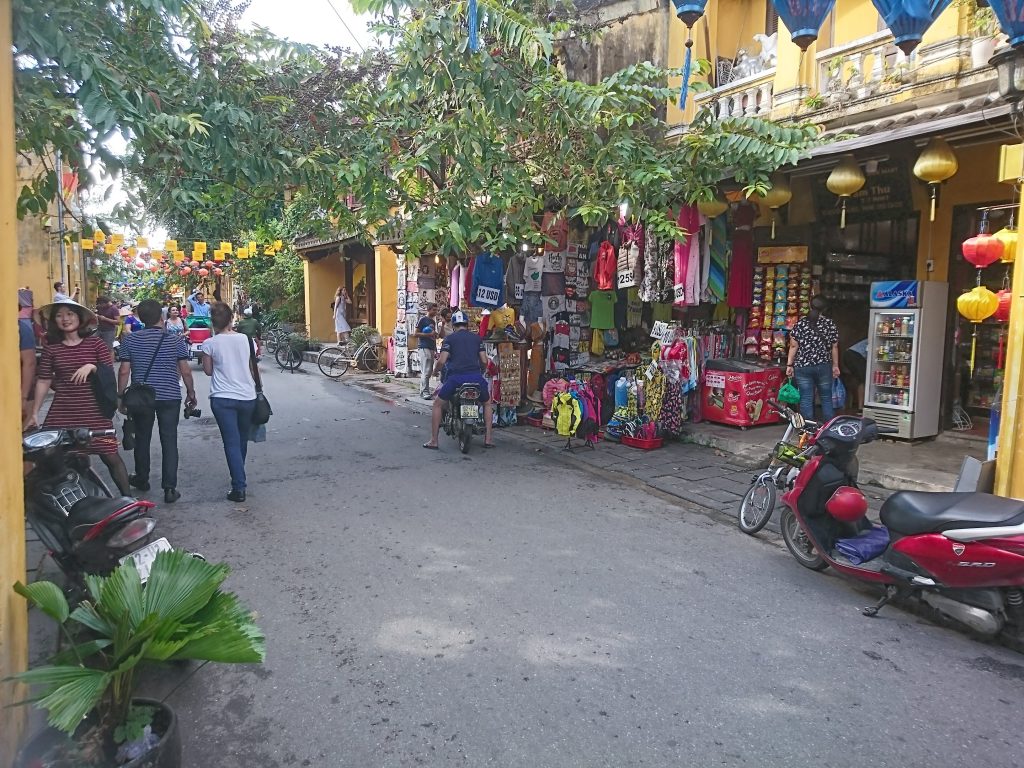
- Hoi An’s temporary historical zone walking areas are so popular with tourists that they can become over crowded with people.
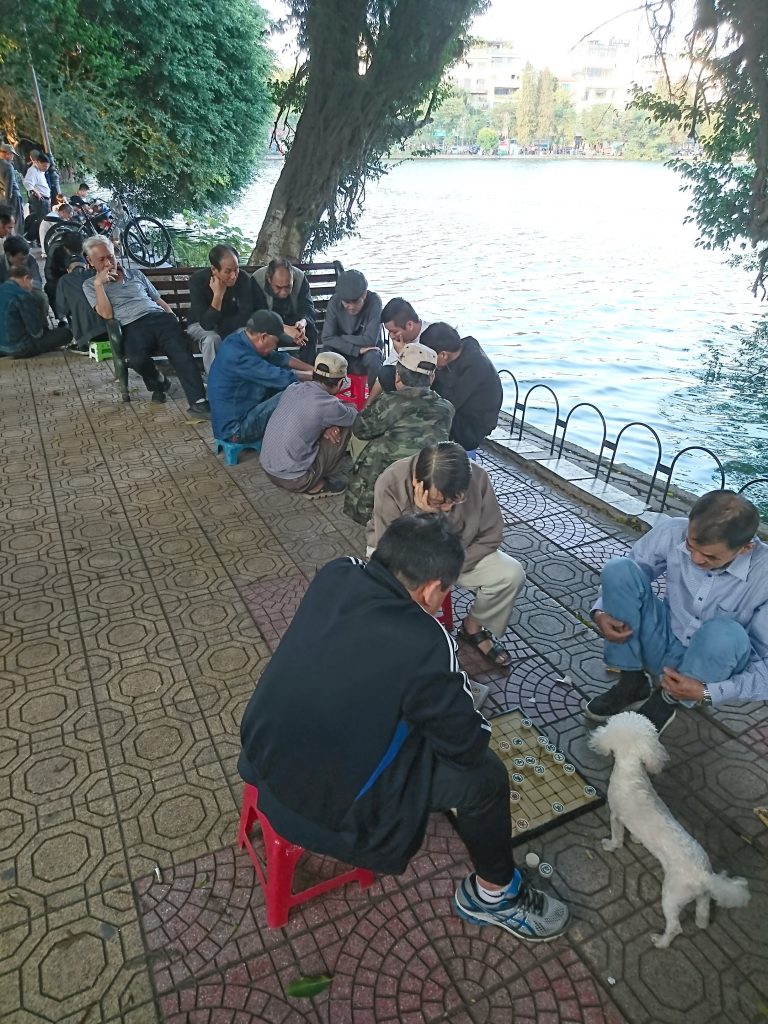
- Hanoi’s pedestrian zones have brought massive improvements to central walking networks as well as events, play spaces and places for community interactions.
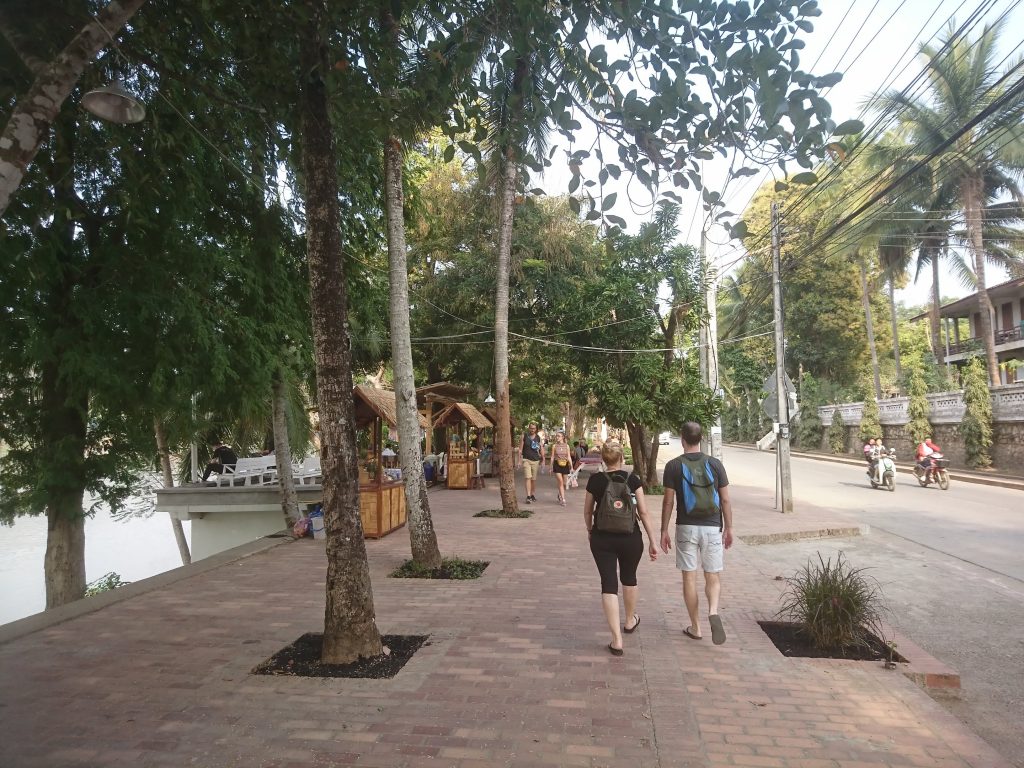
- Luang Prabang takes advantage of its historically pedestrian friendly streets and ban on coaches entering its centre to create a walking market every night and a comfortable pedestrian environment.
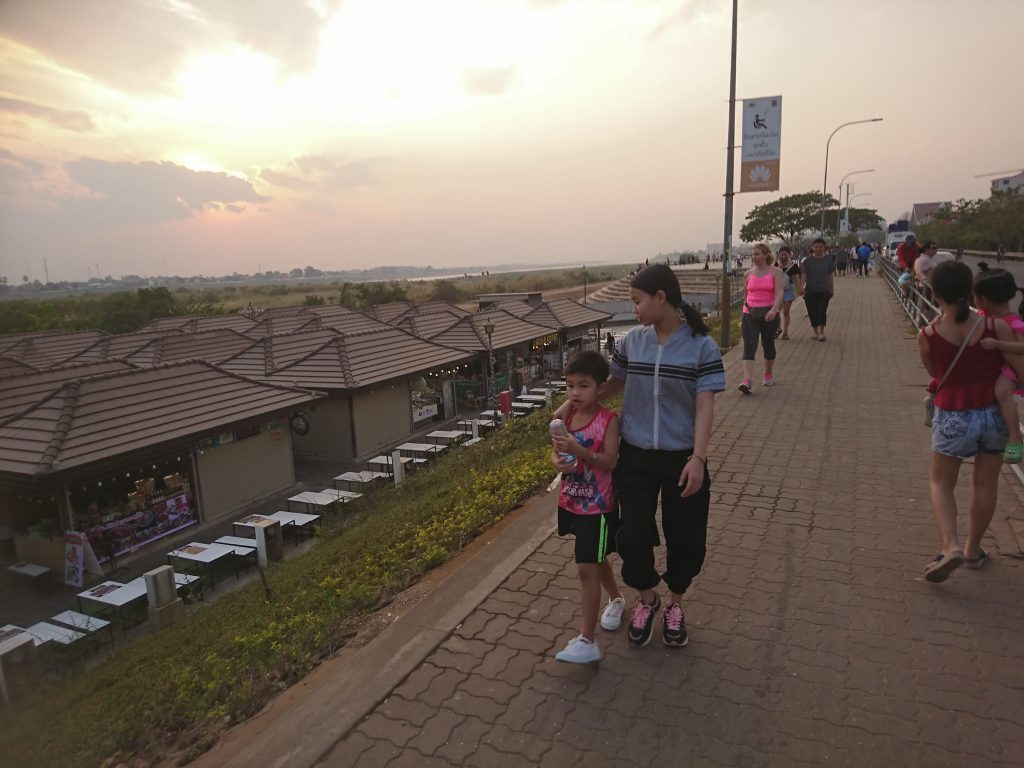
- Vientiane has created a pedestrian corridor – markets, parks, play and event spaces and seating areas – that runs on the banks of the Mekong. On Saturdays they also increase the space by shutting large 3 Lane road adjacent to the space: creating a much larger car free space
All of these examples provide a vital rest bite for pedestrians as they rarely have priority or dedicated walking space on Vietnamese and Laotian streets.
With motorbikes frequently using footways especially in Vietnam (particularly on one way systems); motorbike parking is almost always located on the footway and pedestrian zebra crossings are essentially just for decoration – with motorbikes often running red signals.
Further improvements:
The case studies all have their merits but there are a few ways that they could be improved and expanded upon:
- Ho Chi Minh is planning on expanding its pedestrian friendly streets by creating continuous footways and in addition a walking friendly downtown could be pursued to expand the pedestrianised Nygen Street.
- Hanoi’s pedestrian network has continually been expanded as its success and popularity grew. Future improvements could include turning currently temporary street closures permanent and trialing temporary street closures at time across the whole of the old quarter.
- Hoi An’s walking and cycling zone could be expanded to include more of the town, ban pedal-taxi’s from certain streets and also increase the frequency of timed closures – to all afternoon for example. This could ease the pedestrian congestion in the heart of the town that can be experienced when the closures are in effect.
- All Vietnamese cities could be improved with enforcement and changes in culture regarding no motorbike riding on footways.
- Luang Prabang’s historical centre could be further improved with more timed car free zones – giving space for cultural and community events as well as the daily night market.
- Vientiane can build upon its great river front pedestrian space, walkable heritage conservation zone and recent bus network improvements by creating more pedestrian friendly streets and priority walking networks throughout the city – to and from attractions and public transport.
In summary:
There are a lot of great examples in Vietnamese and Laoation cities of people focused streets and pedestrian friendly spaces, that have been created using both tactical urbanism and flexible street space.
The expansion and prioritisation of similar pedestrian focused schemes will be an essential part of turning the currently vehicle dominated cities into people focused places; and ensuring the capacity of the streets provides enough space for the pedestrian numbers on the streets.
Published: April 2020

